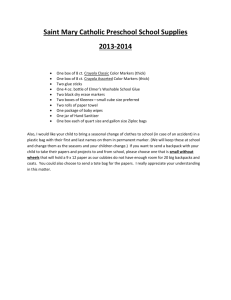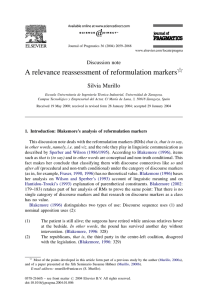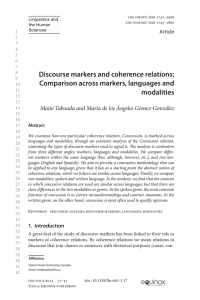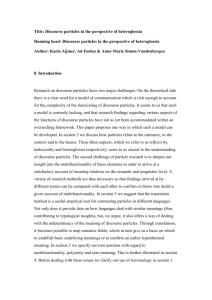Notes on Discourse Markers - HomePage Server for UT Psychology
advertisement
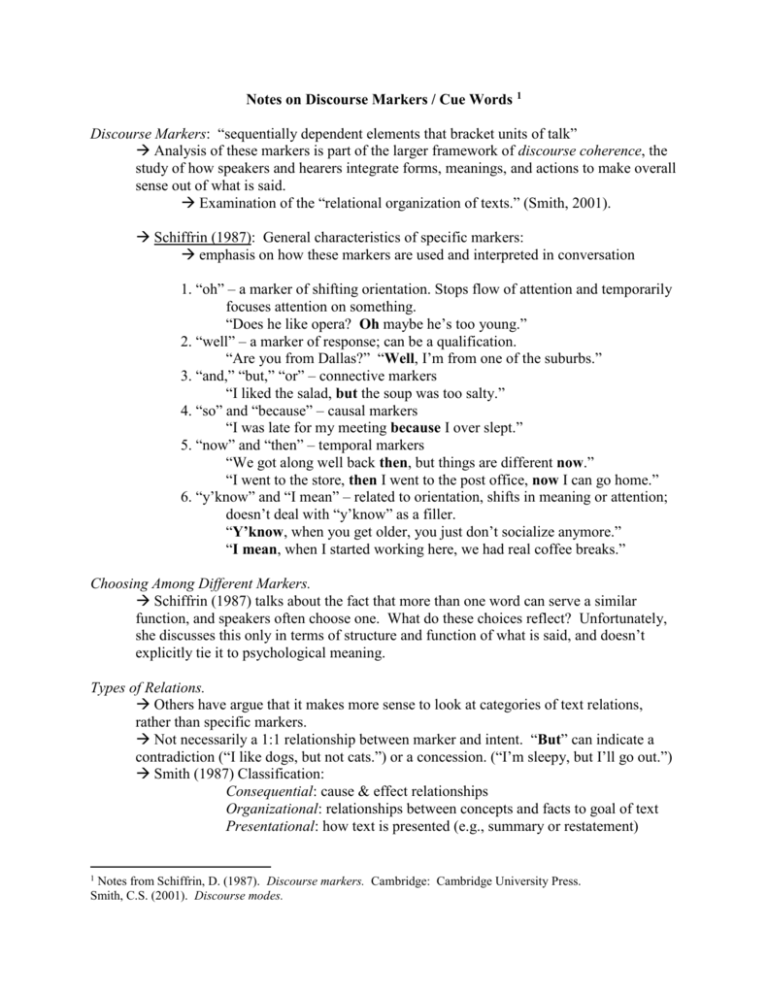
Notes on Discourse Markers / Cue Words 1 Discourse Markers: “sequentially dependent elements that bracket units of talk” Analysis of these markers is part of the larger framework of discourse coherence, the study of how speakers and hearers integrate forms, meanings, and actions to make overall sense out of what is said. Examination of the “relational organization of texts.” (Smith, 2001). Schiffrin (1987): General characteristics of specific markers: emphasis on how these markers are used and interpreted in conversation 1. “oh” – a marker of shifting orientation. Stops flow of attention and temporarily focuses attention on something. “Does he like opera? Oh maybe he’s too young.” 2. “well” – a marker of response; can be a qualification. “Are you from Dallas?” “Well, I’m from one of the suburbs.” 3. “and,” “but,” “or” – connective markers “I liked the salad, but the soup was too salty.” 4. “so” and “because” – causal markers “I was late for my meeting because I over slept.” 5. “now” and “then” – temporal markers “We got along well back then, but things are different now.” “I went to the store, then I went to the post office, now I can go home.” 6. “y’know” and “I mean” – related to orientation, shifts in meaning or attention; doesn’t deal with “y’know” as a filler. “Y’know, when you get older, you just don’t socialize anymore.” “I mean, when I started working here, we had real coffee breaks.” Choosing Among Different Markers. Schiffrin (1987) talks about the fact that more than one word can serve a similar function, and speakers often choose one. What do these choices reflect? Unfortunately, she discusses this only in terms of structure and function of what is said, and doesn’t explicitly tie it to psychological meaning. Types of Relations. Others have argue that it makes more sense to look at categories of text relations, rather than specific markers. Not necessarily a 1:1 relationship between marker and intent. “But” can indicate a contradiction (“I like dogs, but not cats.”) or a concession. (“I’m sleepy, but I’ll go out.”) Smith (1987) Classification: Consequential: cause & effect relationships Organizational: relationships between concepts and facts to goal of text Presentational: how text is presented (e.g., summary or restatement) 1 Notes from Schiffrin, D. (1987). Discourse markers. Cambridge: Cambridge University Press. Smith, C.S. (2001). Discourse modes.




